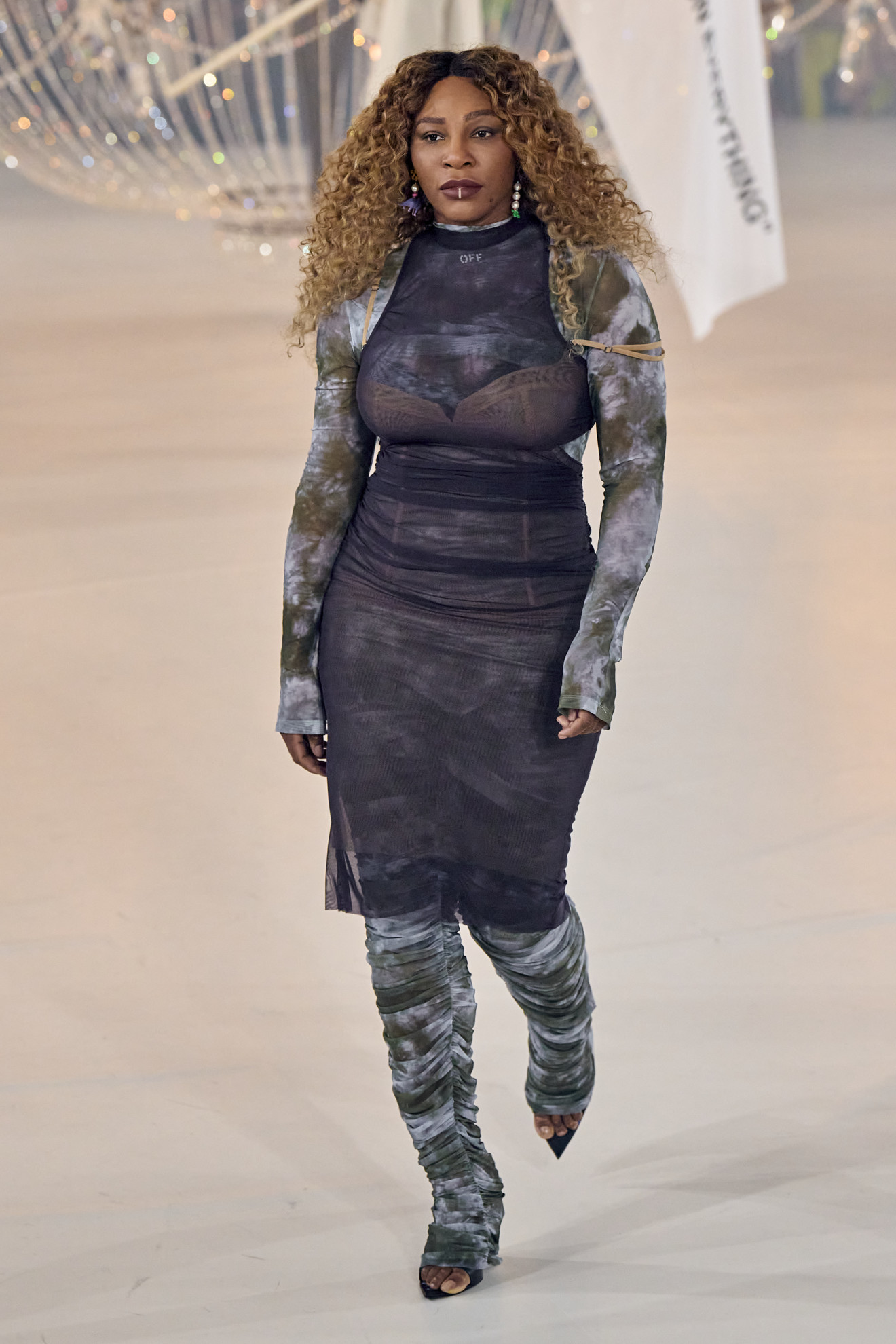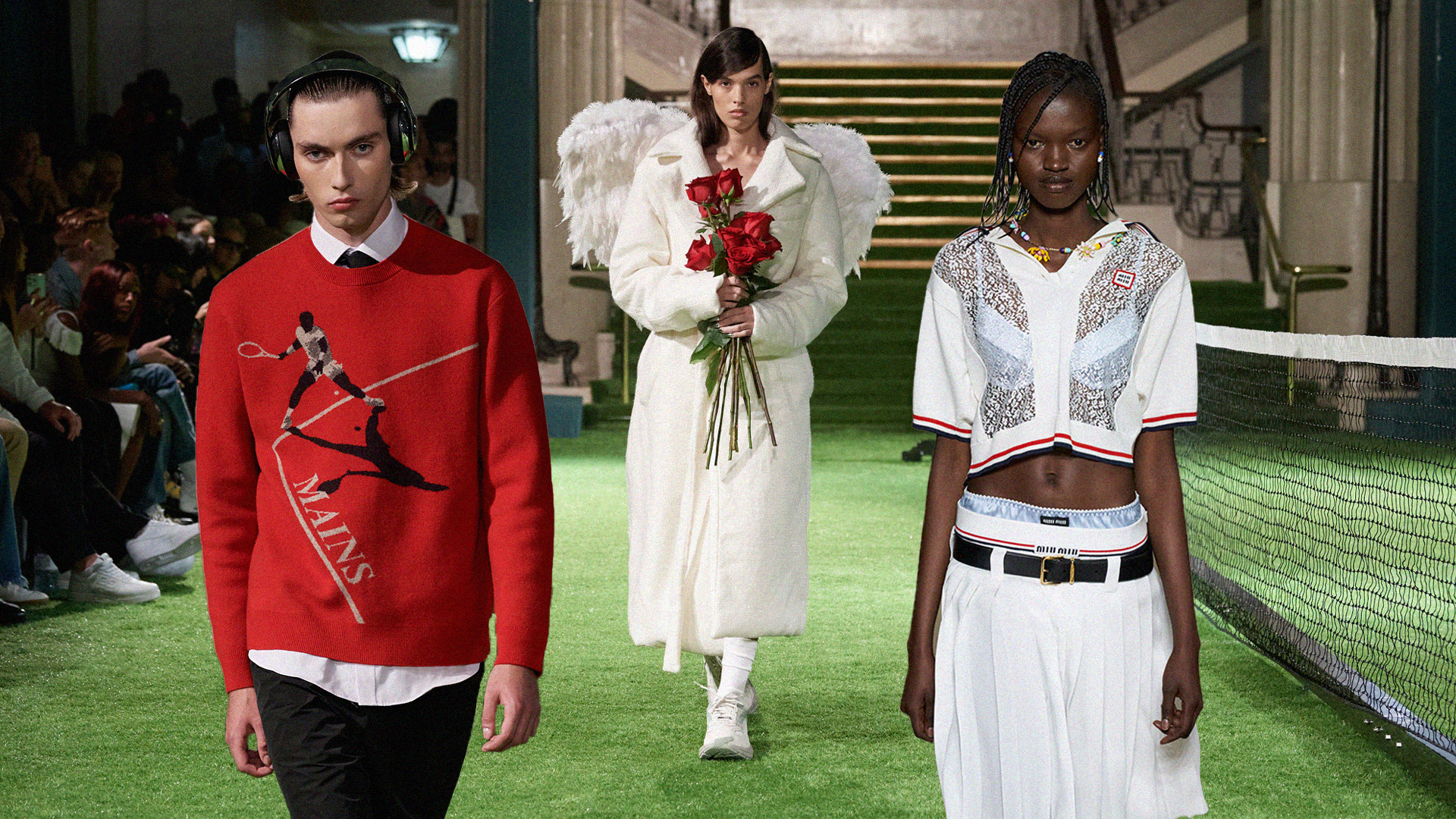Anyone that’s watched The September Issue knows that fashion has a soft spot for tennis. Whether it’s the late but great André Leon Talley decked out in a full Louis Vuitton get-up for a game or Anna Wintour reserving a rare smile for her bestie, Roger Federer, Planet Mode has been awash with crossovers for decades now. Given fashion has long catered to the upper-middle classes, who themselves love a rally, it makes sense. Plus, what could be a bigger serve (sorry!) than those aqua Chanel rackets from SS08? As we reflect on recent seasons we can safely say that it’s official: from Miu Miu to Mains, tennis is very much still holding court.
Of course, in this day and age, there’s a new cultural shift carrying the trend. It’s less about flexing your net worth (last one, promise!) and instead, about reappropriating the once-siloed sport’s codes to make them your own. In doing so, designers and creatives are undoing some of its oldest strictures and replacing the conservative dress codes of SW19 with a sartorial social commentary.
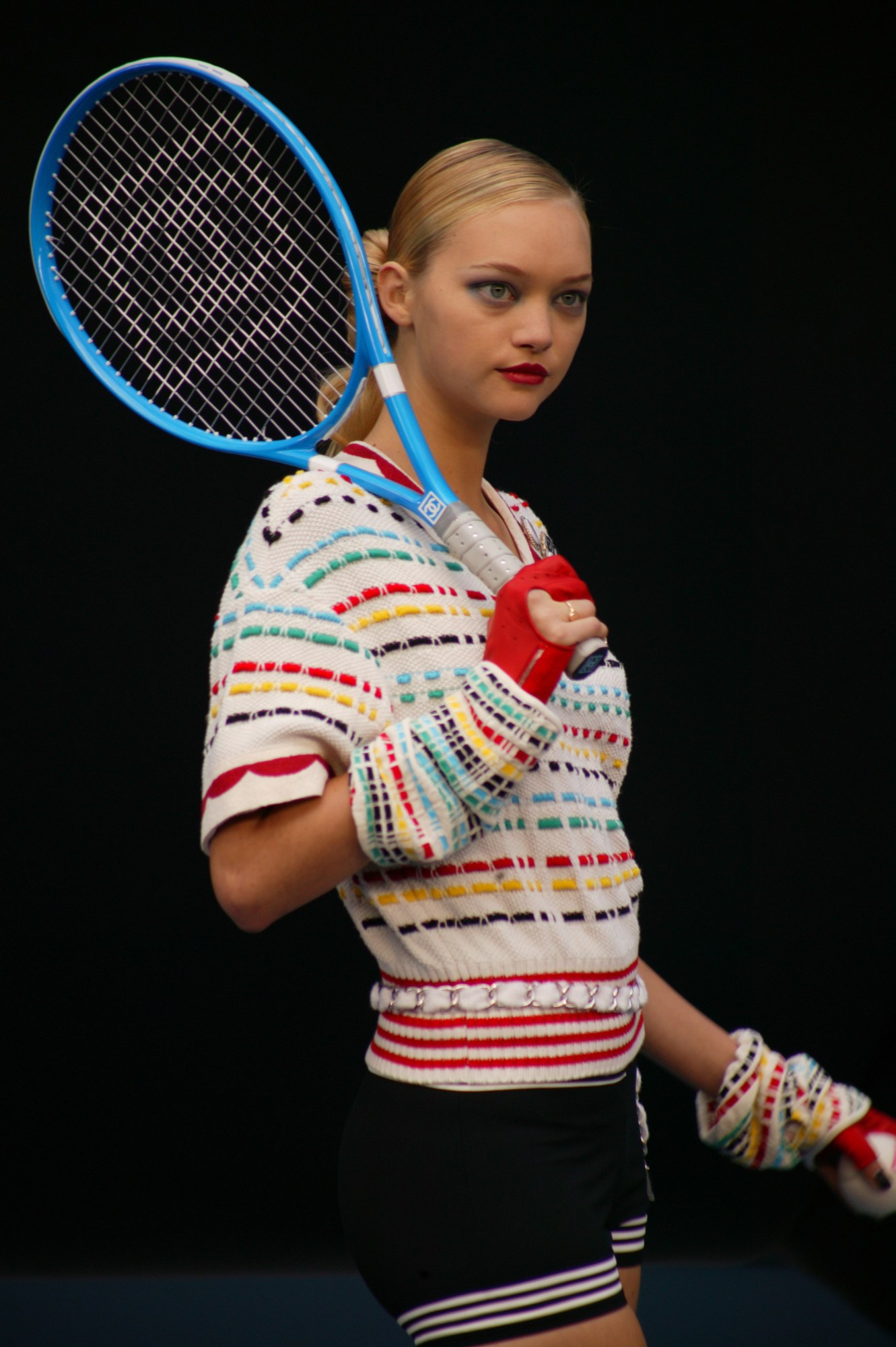
Nowhere was this more felt than at Mains, the freshly revived brand directed by Skepta. Held inside a make-believe tennis court, complete with astroturf, match commentary and those giant clocks à la Rolex at Wimbledon, the SS24 show was filled with racket-toting models armed also with luxe, red leather tennis bags and slim, gaulois tennis tracksuits akin to 80s Lacoste. Beady-eyed watch fans might have also noticed the green-dialled Rolex Datejusts Skepta styled the collection with for good measure, matching their gold casing to the jacket zips. Taking Miami leisure culture as his starting point, Skepta was set on delivering luxury for a crowd that knows fashion via him. “When I got the message that Mains was good to go, I was in Miami,” he told us in a preview before the show. “I saw it all in my head, how I wanted to do it.”
Given that the world of tennis has used strict dress codes to police who can and can’t access it since Victorian times, Skepta’s show — punctuated with a cast of models including rappers A$AP Nast and JME — feels prescient. Shown alongside 90s hip-hop staples, like the Tupac Shakur-inspired dungarees and Timberland boots, these pieces acquired profound meaning. Originally, tennis whites were white because the colour signified a purity and respectability, marking tennis players out as a higher class and status. The tennis toffs didn’t want commoners scuffing around their manicured lawns, basically. When this uniform of elitism is taken on by Skepta and friends though, it’s refreshed, providing exquisite fabrication and preppiness for kids who don’t idolise Miss Wintour or John McEnroe, but Skeppy himself.
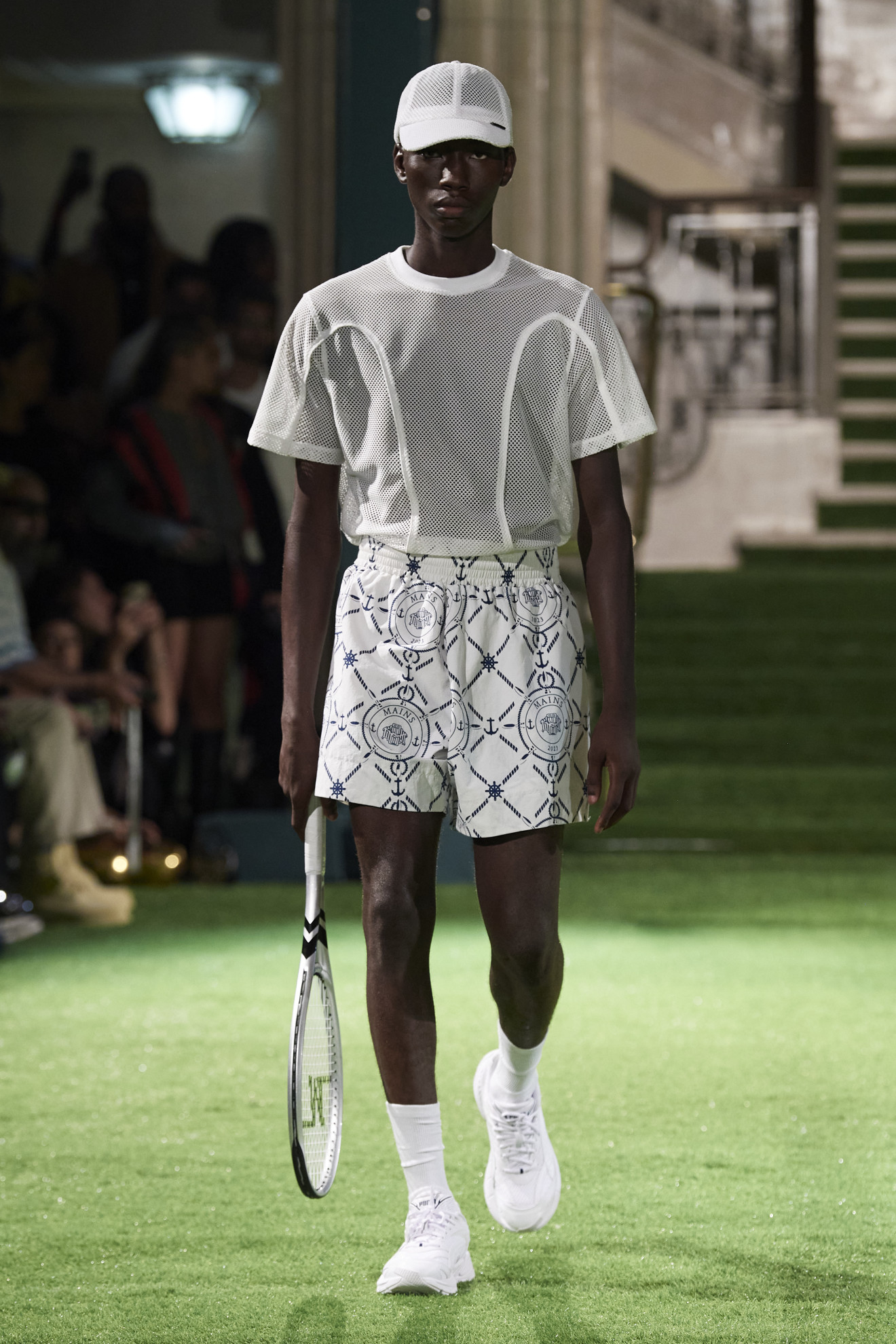
Of course, tennis’ elitism is not just a thing of the past. Serena Williams, an icon for young Black women (and Grand Slam record-breaker), faced consistent backlash for her outfits from nit-picking commentators — especially that time at the 2018 French Open, when her black Nike catsuit left la Fédération Française de Tennis reeling. Quelle horreur! Since then, fashion has been a source of emancipatory expression for Serena. Remember Nike’s SS19 capsule dedicated to her? How about her Off-White AW22 modelling cameo? And the Nike diamond-encrusted leotard-skirt and sneakers emblazoned with the words ‘Queen’ and ‘Mama’ she wore at the US Open 2022? Iconique.
More broadly, tennis dress rules have always fallen hard on women, enforcing modesty or an archaic vision of femininity that still lingers to this day. As such, it’s a ripe avenue for making subtle digs at the uniform’s heritage, especially on the runway. Consider Miu Miu, whose AW22 tennis skirt — lined with red-and-blue piping akin to Björn Borg’s 80s Fila two-pieces — was not much wider than the belt holding it up. As for the accompanying polo, this came with lace inserts to reveal the bra underneath, tucking neatly into frilly Miu Miu panties. Wimbledon umpires, while they might have appreciated the all white, would quake in their Polo Ralph Lauren chinos were anyone to rock up to Centre Court in this.
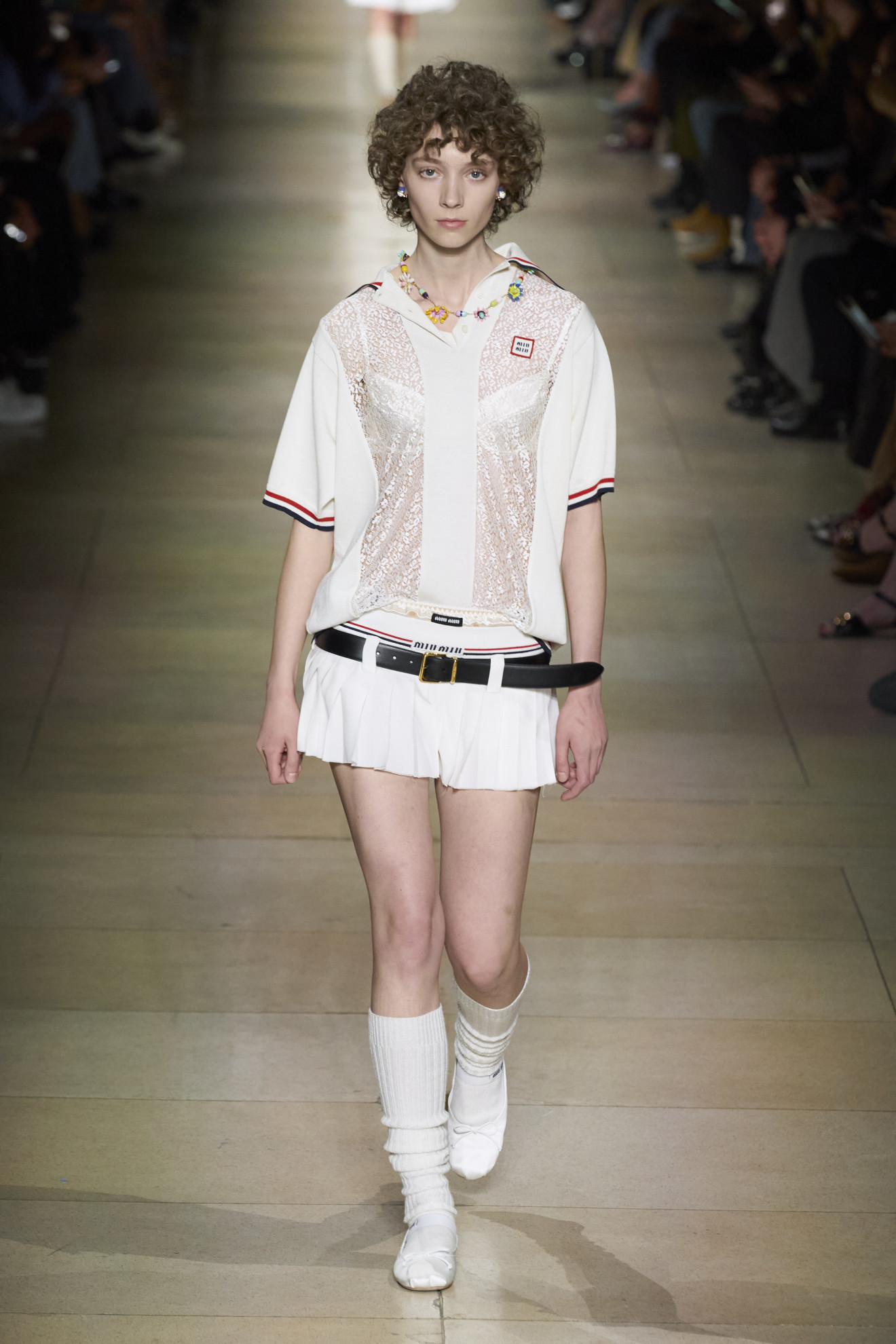
In fact, even the brands rooted in tennis’ oldest, stuffiest histories have been appropriated far beyond their origins by teeming subcultures. This spans the skinheads and mods adding braces or loafers to their Fred Perry – yes, he was a tennis player first – and the youths of Paris’ banlieues making Lacoste polos or Sergio Tacchini tracksuits the ultimate status symbol. Just watch La Haine (1995) for further proof of this athletic elegance. To this day, such tennis essentials remain hot stuff among young people, especially in London, where online marketplace-turned-culture-brand Wavey Garms has long pushed these labels, recently culminating in a dedicated Lacoste Pop-Up organised by Andrés Branco to celebrate the brand’s 90th anniversary. Here, Andrés amassed some of the rarest Lacoste pieces, presenting them among a Jeremy Deller-inspired artwork that charts the brands connections to rave, jungle, acid house and beyond; while also curating parties with Rinse FM and panels with graffiti writer Drax, stylist Rhiannon Isabel and Palace designer Gabriel Pluckrose, to explore the deeper histories behind the brand.
“I think tennis fashion becoming such a big thing in the UK does come from Björn Borg in the Fila tracksuit, but also the football casuals going abroad stealing clothes — around that time it was a lot of tennis gear,” says Andrés. “For me, growing up, the older kids with a bit more money would all have a full Lacoste tracksuit and Lacoste Girolle hats — similar to how the Brazilians and French guys dress. It was working-class kids wanting to outdo each other.” The same holds now, albeit with a nostalgic twist. Search for these items on Depop, and you’ll find a whole new generation sourcing tennis classics years on from their first appropriation. Otherwise, head to Sao Paulo’s periferia, for the ‘Lacosteiros’, a thriving scene of baile funk-loving youngsters dripped out in the slender tracksuits from the French label.
Granted, tennis isn’t just thriving in subcultural trends, but also on the highstreet. JW Anderson’s Roger Federer collaboration for Uniqlo, for example, is making what remains one of the least democratic sports that bit more accessible, applying a playful, boyish touch to sweat-wicking tennis separates and offering up the signature colour-blocked sweaters. Chic, but sporty.
Considered together, tennis and fashion’s love affair isn’t so much novel, but the way it’s being used right now is. Both fashion and sport are major cultural industries, steeped in celebrity, spectatorship and offshoot subcultures. You don’t need a great backhand to know that the rules and stiff-lipped past of tennis is a playground for fashion designers and youth cultures alike. With so many archetypes and traditions to unpick, not to mention a major reach, tennis remains fair game for fashion. Game, set and match.
